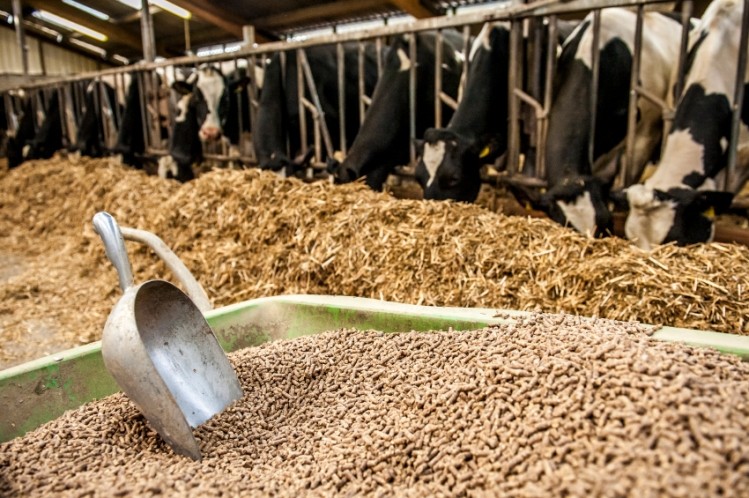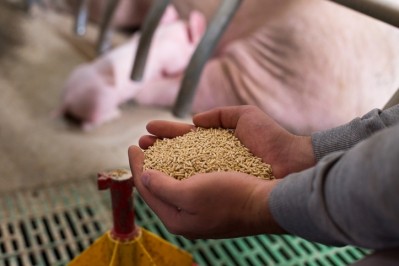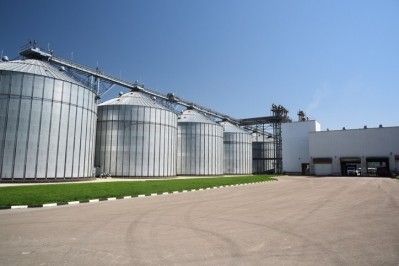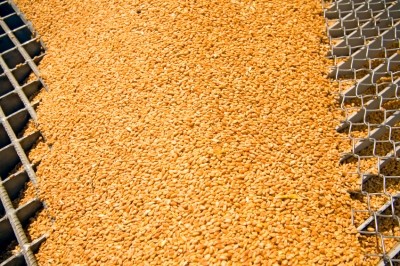Pessimistic outlook for EU feed production in 2016

In its annual outlook, EU feed manufacturers’ federation, FEFAC, said it was “relatively pessimistic” concerning industrial compound feed production in Europe this year.
But the trade group predicts the upward trend on poultry feed demand will persist, although at a reduced pace than in 2015.
FEFAC said, so far, the weather conditions have been very favorable to forages in Northern Europe with relatively warm temperatures, a trend which should weigh on the demand for cattle feed in 2016.
Overall, the trade association forecasts a 0.5% decrease in compound feed production compared to 2015.
When asked whether further EU compound feed industry consolidation is likely in such a depressed production environment, Arnaud Bouxin, FEFAC deputy secretary general, told us: "Industry consolidation is likely to continue, but it’s not a clear case whether this speeds up or not under the circumstances. It’s an undeniable fact though that the financial difficulties of the livestock chain have an impact on the profitability of the feed industry."
FEFAC also noted that certain developments such as El Niño weather pattern in the Southern hemisphere, the risk of rain deficit in South Europe and disease outbreaks could have an impact on compound feed output over the next 12 months.
However, the ongoing negotiations with Russia on sanitary aspects, if concluded positively, could reactivate exports of certain pig products to Russia and alleviate the pressure on the pig meat market, it added.
Insiders’ view
Richard Maatman, global marketing director at Trouw Nutrition, Nutreco's animal nutrition business, commenting in our feed market outlook in December, said:
“The swine market is where there are the biggest concerns. The primary reason for that, especially in the EU, the second largest market in the world, is that nobody in the value chain is taking control of which direction to take.
We miss vision and leadership in the pork value chain, something we have been clearly seeing in the dairy and poultry markets. The swine industry is struggling to innovate and develop new food concepts, and it lacks the orchestrator in the chain to produce these. It lags behind when it comes to creating new concepts that add value to the product.
So, I’m not too optimistic when it comes to turning the tide."
Andrew Knowles, marketing director, pigs at ForFarmers, agreed with Maatman that the difficulties the European pig sector experienced this year look set to continue into 2016.
He cites factors such as strong on-farm technical performance increasing pig meat production; a highly competitive retail sector fighting for market share and profitability through squeezing supply chain margins; static consumption trends as hard pressed consumers look to make their household budgets go further; and geopolitics restricting third country — Russia — market access: “The consequence is a pressure cooker of oversupply and weak demand for European pig meat."
Knowles said there will be some realignment of the European breeding herd — around 3% — as weaker businesses become unsustainable.
But he did strike an optimistic note: “The pig sector has developed resilience to these challenges. Historically low raw material prices, renewed emphasis on technical efficiency, and the development and exploitation of value adding supply chain initiatives provide opportunities for the sector to regain financial stability and sustainability in the year ahead.”
FEFAC estimates on compound feed production in 2015
The compound feed production in the EU-28 in 2015 reached an estimated level of 156.1m tons, which was 0.2% more than in 2014, according to initial data provided by FEFAC members.
Industrial compound feed production output for 2015
2014 2015 % Variance 2015/2014
Cattle feed 42.5 42.1 -1%
Pig feed 49.2 49.2 0
Poultry feed 51.8 52.7 +2
Total 155.8 156.1 +0.2
The trade group said feed costs remained low and even decreased compared to 2014, due to a good 2015 cereals harvest in the EU, both in terms of quantity and sanitary status, and a largely sufficient supply of oilseed meals globally, especially soybean meal.
Industrial pig feed production remained stable in 2015, making up for decreasing pig meat quotations to a certain extent, said FEFAC.
As regards cattle feed, the picture differs throughout Europe, depending on weather conditions for forages production, noted the trade group. The effect of the quota regime, with a +1% milk delivery expected in 2015/16 compared to 2014/15, was hardly visible for the EU compound feed industry, with an overall 1% decrease in industrial cattle feed, added FEFAC.
Poultry feed production continued to jump — by almost 2% in 2015, boosted by an increasing per capita consumption of meat, which benefited primarily to poultry meat, said the association.
As a consequence, poultry feed consolidated its position of leading segment of EU compound feed production, now well ahead of pig feed, said FEFAC
Demand for poultry feed has turned Poland into the largest poultry producing country in the EU, it noted.
And Germany strengthened its position as leading EU country in terms of total compound feed production, before Spain and France, added FEFAC.








